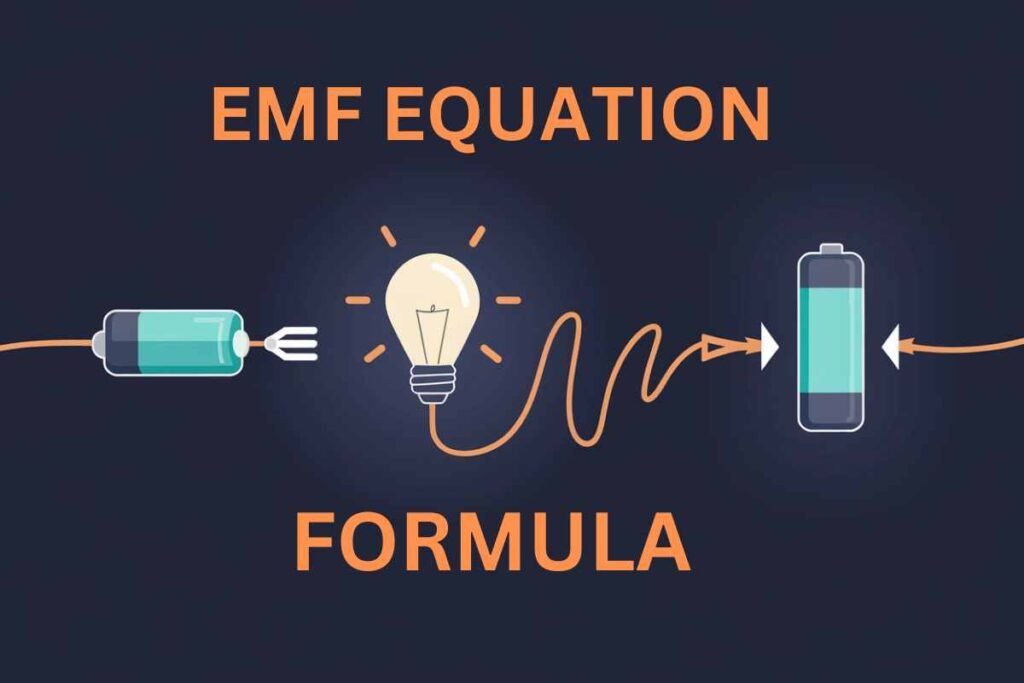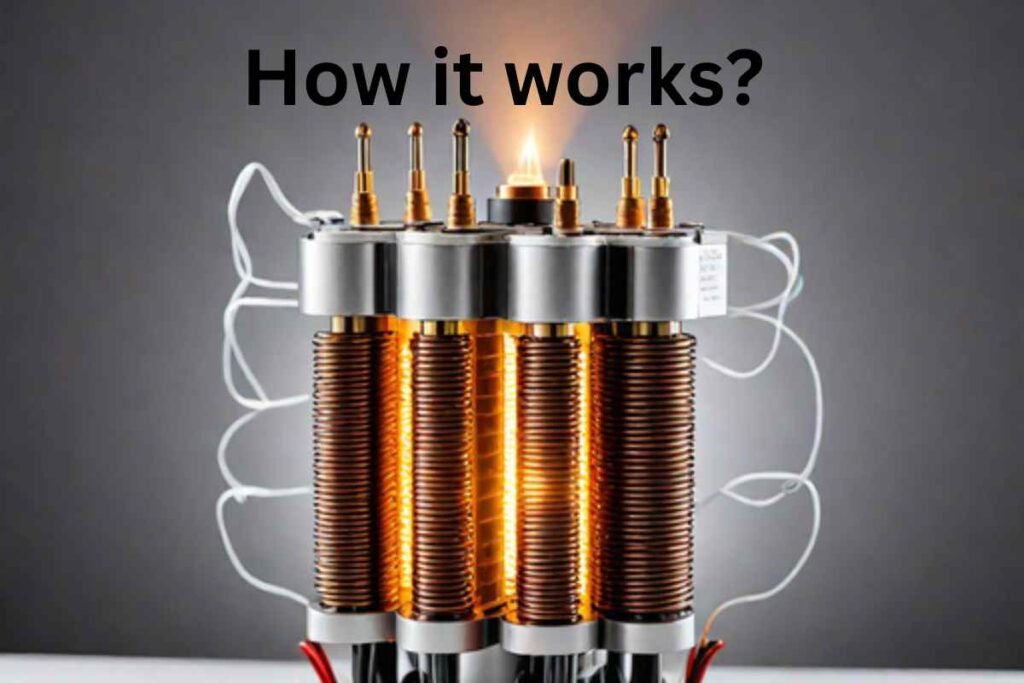The EMF Equation of Transformer is a fundamental concept in electrical engineering that helps us understand how transformers work.
Whether you’re new to transformers or need a refresher, this article will explain the EMF Equation of Transformer in simple terms, its significance, and how it is used to transform voltage in electrical systems.
What is the EMF Equation of Transformer?
The EMF Equation of Transformer defines the relationship between the voltage (or EMF) induced in the primary and secondary coils of a transformer.
This voltage depends on factors like the number of turns in the coils, the frequency of the alternating current (AC), and the magnetic flux passing through the coils.
In simple terms, the EMF Equation of Transformer shows how the transformer converts electrical energy from one voltage to another, either stepping it up or stepping it down.
The equation is critical for understanding how transformers operate and is used to design transformers for specific applications.

The Formula of the EMF Equation of Transformer
The EMF Equation of Transformer can be written as:
- E2/E1=N2/N1represent the voltages induced in the primary and secondary windings (coils).
- The frequency of the alternating current (AC).
- E2/E1=N2/N1 are the number of turns in the primary and secondary coils.
- The maximum magnetic flux in the transformer’s core.
E1=4.44⋅f⋅N1⋅Φmax
E2=4.44⋅f⋅N2⋅Φmax
This equation shows that the voltage induced in each coil is proportional to the number of turns, the frequency of the AC supply, and the magnetic flux in the core.
Why is the EMF Equation of Transformer Important?
The EMF Equation of Transformer is essential for several reasons:
Voltage Control
The equation helps determine how voltage is adjusted in a transformer. By changing the number of turns in the coils, engineers can design transformers to either increase (step-up) or decrease (step-down) the voltage.
Energy Efficiency
Understanding the EMF Equation of Transformer allows for the efficient design of transformers, ensuring that they operate optimally and minimize energy losses.
Power Transmission
Transformers use the EMF Equation to change voltage levels, enabling electricity to be transmitted over long distances efficiently.

How Does the EMF Equation of Transformer Work?
The working of the EMF Equation of Transformer can be broken down into the following steps:
Magnetic Induction
When an alternating current (AC) flows through the primary winding, it creates a changing magnetic field around the coil.
This magnetic field induces an EMF in the secondary coil, according to Faraday’s Law of Induction.
Voltage Induction
The EMF Equation of Transformer relates this induced voltage to the number of turns in the coil and the rate of change of the magnetic flux.
As the number of turns increases, the induced voltage also increases.
Voltage Transformation
By adjusting the number of turns in the primary and secondary coils, transformers can either step up or step down the voltage. This is the basis of how electricity is transmitted over long distances (step-up) and used in homes (step-down).
Applications of the EMF Equation of Transformer
The EMF Equation of Transformer plays a key role in various applications, including:
Power Distribution
In the power grid, transformers use the EMF Equation of Transformer to increase the voltage for efficient long-distance transmission.
When the electricity reaches homes or businesses, the voltage is stepped down to a safe level for use.
Voltage Regulation
The equation is crucial in designing transformers that regulate voltage levels for various devices.
For instance, in electronics, transformers ensure that devices receive the appropriate voltage for proper functioning.
Electrical Equipment
Transformers are found in many electrical devices, from power stations to household appliances. The EMF Equation of Transformer ensures that the right amount of voltage is supplied to these devices.

The Key Components of the EMF Equation of Transformer
Understanding the key components of the EMF Equation of Transformer is essential for grasping how transformers function. These components include:
Frequency : This refers to the rate at which the AC changes direction. The higher the frequency, the higher the voltage induced in the coils.
Number of Turns : The number of turns in the coils determines how much voltage is induced. More turns result in higher voltage.
Magnetic Flux : This is the maximum strength of the magnetic field within the transformer core. The stronger the magnetic field, the higher the voltage induced.
How to Calculate Voltage Using the EMF Equation of Transformer
To calculate the voltage using the EMF Equation of Transformer, follow these steps:
1. Calculate Primary Voltage
First, you calculate the primary voltage using the equation:
E1=4.44⋅f⋅N1⋅Φmax
2. Calculate Secondary Voltage
Next, calculate the secondary voltage with:
E2=4.44⋅f⋅N2⋅Φmax
3. Determine the Turns Ratio
The turns ratio is the ratio of the number of turns in the primary and secondary coils. The voltage ratio is directly proportional to this ratio:
E2/E1=N2/N1
If the number of turns in the primary coil is greater than in the secondary, the transformer will step down the voltage; otherwise, it will step up the voltage.
Conclusion
The EMF Equation of Transformer is a crucial concept in electrical engineering, allowing us to understand how transformers work to step up or step down voltage.
This equation shows the relationship between the induced voltages in the primary and secondary coils, based on factors like frequency, number of turns in the coils, and magnetic flux.
By applying the EMF equation, engineers can design efficient transformers for a wide range of applications, from power distribution to voltage regulation in electronics.
Understanding the EMF Equation not only helps in the operation of transformers but also contributes to the efficient transmission of electricity, ensuring that electrical energy is delivered safely and effectively across long distances.
Whether you’re working with power systems, electrical equipment, or studying electrical engineering, grasping this fundamental equation will deepen your knowledge and improve your technical skills.
FAQS:
What is the EMF Equation of a Transformer?
The EMF Equation shows how voltage is induced in a transformer’s coils based on the number of turns, frequency, and magnetic flux.
Why is the EMF Equation important?
It helps engineers design transformers to control voltage, improve efficiency, and support long-distance power transmission.
How does a transformer change voltage?
By increasing or decreasing the number of coil turns, a transformer can step up or step down the voltage.
What is the formula for the EMF Equation?
E = 4.44 × f × N × Φmax
Where:
- E = induced voltage
- f = frequency
- N = number of turns
- Φmax = maximum magnetic flux
Where is the EMF Equation used in real life?
It’s used in power grids, electronics, and electrical devices to ensure correct voltage levels and efficient energy transfer.